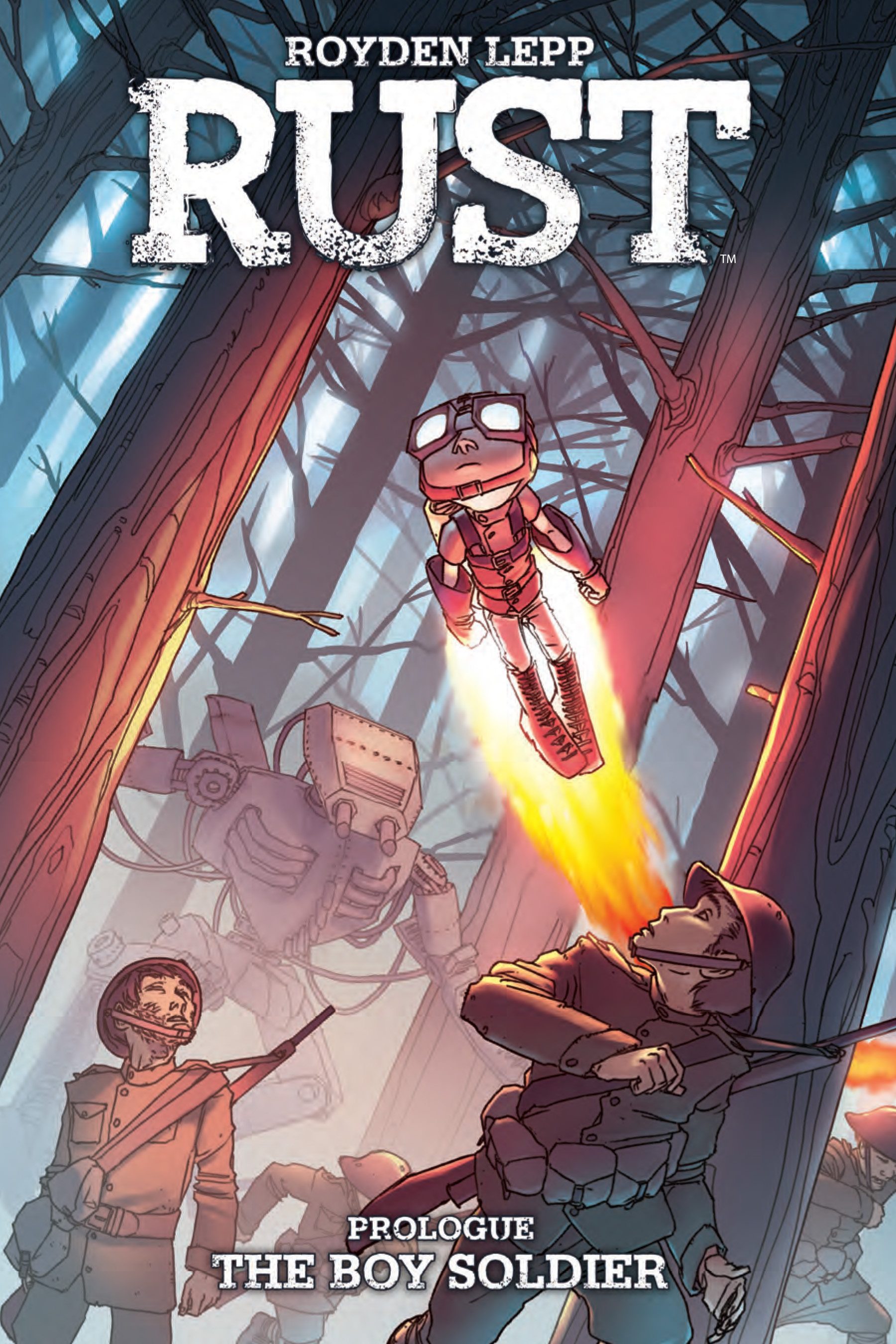
I can’t remember the first time I heard about Royden Lepp’s graphic novel Rust. Even though it first came out in 2011, it seems like it was always there, tantalizing me with its sepia-toned beauty and story of a boy robot trapped in a world that looked and felt very much like the 1940s… but was filled with steampunk-inspired imagery, killer robots, and rocket-powered jet packs.
Really, what’s not to love about what I just wrote?
Over the past five years and across three gorgeous books (Visitor in the Field, Secrets of the Cell, and Death of the Rocket Boy), Royden Lepp has been telling the story of Jet Jones, that mysterious boy robot with the rocket strapped to his back. And it’s been one hell of a ride. In anticipation of the fourth and final book in the series, Lepp and publisher Archaia are returning to the beginning.
Rust: The Boy Soldier is the first book in a new softcover program for the series, which will ultimately see reissues of the existing books in the new format. The Boy Soldier, though, contains the prelude chapters from the three previously released volumes along with the prelude chapter from the forthcoming fourth chapter. In other words, it presents Jet’s backstory from a new perspective, which should satisfy existing fans and be a perfect (and affordable) jumping-on point for new readers.
I caught up with Royden Lepp and chatted about the new book, his journey while telling Jet’s story, and the imminent conclusion to the story that has dominated so much of his creative life.
After our Q&A, keep scrolling to check out a five-page exclusive preview of the new book.
GeekDad: The first volume of Rust, Visitor in the Field, came out in 2011, and we’re about to finally see the fourth and final volume. But before that happens, a new paperback edition will be released with a new name: The Boy Soldier. How is this different from Visitor in the Field, and why opt for a paperback edition now, five years later?
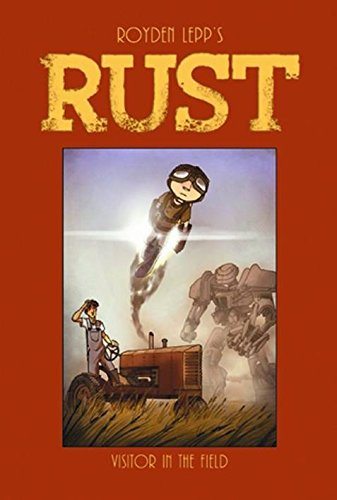 Royden Lepp: The Boy Soldier is actually not Volume 1 at all. In fact we’re calling it Volume 0. I had this idea that I pitched to Archaia last year: What if we pulled out all the flashbacks to the great war, Jet Jones’ origin story, and printed them as a totally separate book? And what if that started the paperback program? We pulled out the pages, read it in the new order, and it actually worked really well. It’ll be a totally new way to experience the story for existing fans but still a great experience for new ones. I’ve always been an advocate of getting Rust into paperback; the hardbacks are beautiful and I love them, but they’re expensive. I think we were just waiting for the right time.
Royden Lepp: The Boy Soldier is actually not Volume 1 at all. In fact we’re calling it Volume 0. I had this idea that I pitched to Archaia last year: What if we pulled out all the flashbacks to the great war, Jet Jones’ origin story, and printed them as a totally separate book? And what if that started the paperback program? We pulled out the pages, read it in the new order, and it actually worked really well. It’ll be a totally new way to experience the story for existing fans but still a great experience for new ones. I’ve always been an advocate of getting Rust into paperback; the hardbacks are beautiful and I love them, but they’re expensive. I think we were just waiting for the right time.
GD: I know that inspiration takes many forms, so would you say the concept for Rust came all at once in a flash, or did it develop slowly over time?
RL: It’s been very slow. There were definitely very large chunks that came to me all at once, but I’d describe it more like seeing a story through the fog and slowly watching the fog clear. I remember the night many years ago when the final volume came together in my head. I was lying in bed, and I literally saw the ending. I laughed out loud and my wife asked what I was laughing about. I told her I just saw the end of Rust. I’m just getting to draw some of those scenes now, years later. It’s wonderful.
GD: How much concept art do you do when creating a new character or environment?
RL: Probably not enough. Rust actually had quite a bit of early concept art because it first existed as a video game pitch, but in general I don’t do enough concepts. I see so many artists get stuck in the concept loop as though they’re trying to create “the making of” book for the story that they never made. I’ve always been afraid of that, so I try not to linger in that early phase.
 GD: After the fourth volume in the series is released, do you think you’ll be able to look back and be satisfied with the story you told? Or are there places you wish you could revisit, tweak, or rewrite?
GD: After the fourth volume in the series is released, do you think you’ll be able to look back and be satisfied with the story you told? Or are there places you wish you could revisit, tweak, or rewrite?
RL: I have a lot of thoughts about what I think I might feel but I don’t think I’ll know until the series is complete and I come down from that mountain. There are always things that creators wish they could go back and do over, but that’s kind of life, isn’t it? I’m not sure I’ll know until that day I can sit down and read Volumes 1 thru 4 for the first time.
GD: The illustrations are all done in sepia, which certainly helps couch the story in the “trapped-in-the-40s” world you’ve created. I imagine this was a conscious decision, but did you face any resistance to that approach? Have you ever considered going back and doing a full-color version?
RL: Rust used to be with another publisher, and they only had the budget for black and white. I brought up the idea of doing sepia but they said that it would cost the same as full-color printing and they weren’t willing to do that. But when Rust landed with Archaia, that was one of the first things that founder Mark Smylie suggested, printing in sepia. That’s when I knew Archaia was the right home for Rust. I would still love to do a full-color version of the series one day. Maybe a huge 800-page omnibus in full color? That would be a heavy book.
GD: Are you looking forward to the end of Rust at all? Are you anxious to dive into other stories you want to tell and other worlds you want to explore?
RL: I’m anxious to complete the series, but I think it’ll be bittersweet. I have several other stories I really want to dive into but finishing this journey will probably be hard. I’ve spent years drawing Rust late after work, drawing Rust early before work, drawing Rust next to my dad’s hospital bed, drawing Rust with my newborn son sleeping on my lap. It has defined a lot of my years. It’s kind of hard to think about it ending.
GD: If Jet were to recruit an “army” (or a secret club) of other pop-culture robots, who would be the top three on his list?
RL: Astro Boy! Then maybe the Terminator, the good one from T2. And then maybe one of the Boston Dynamics dogs. Boston Dynamics is part of pop culture right?
 GD: Do you have any interest in seeing Rust adapted to another medium? If so, where and how? And by whom?
GD: Do you have any interest in seeing Rust adapted to another medium? If so, where and how? And by whom?
RL: I’d love to see it as a live-action movie And I’d love to see it directed by Jeff Nichols or Joe Cornish, or Duncan Jones, or Neill Blomkamp, or Tarsem Singh. And I think it should be at 20th Century Fox, produced by Simon Kinberg. Is that too specific? 🙂
GD: Whose work – either as an author or illustrator – in graphic novels (or otherwise) today do you really admire? Do you still get excited to see new books from favorite creators?
RL: I don’t read much. I’m always afraid that I’ll be overly influenced by another’s work. But some of the biggest inspirations years ago were people like Kazu Kibuishi and Jeff Smith. I like Jeff Lemire a lot. I find the stories that really interest me now are kind of “off the beaten path.” I recently read a story called Haunter by Sam Alden, and it struck me. It was a wonderful and beautiful experience.
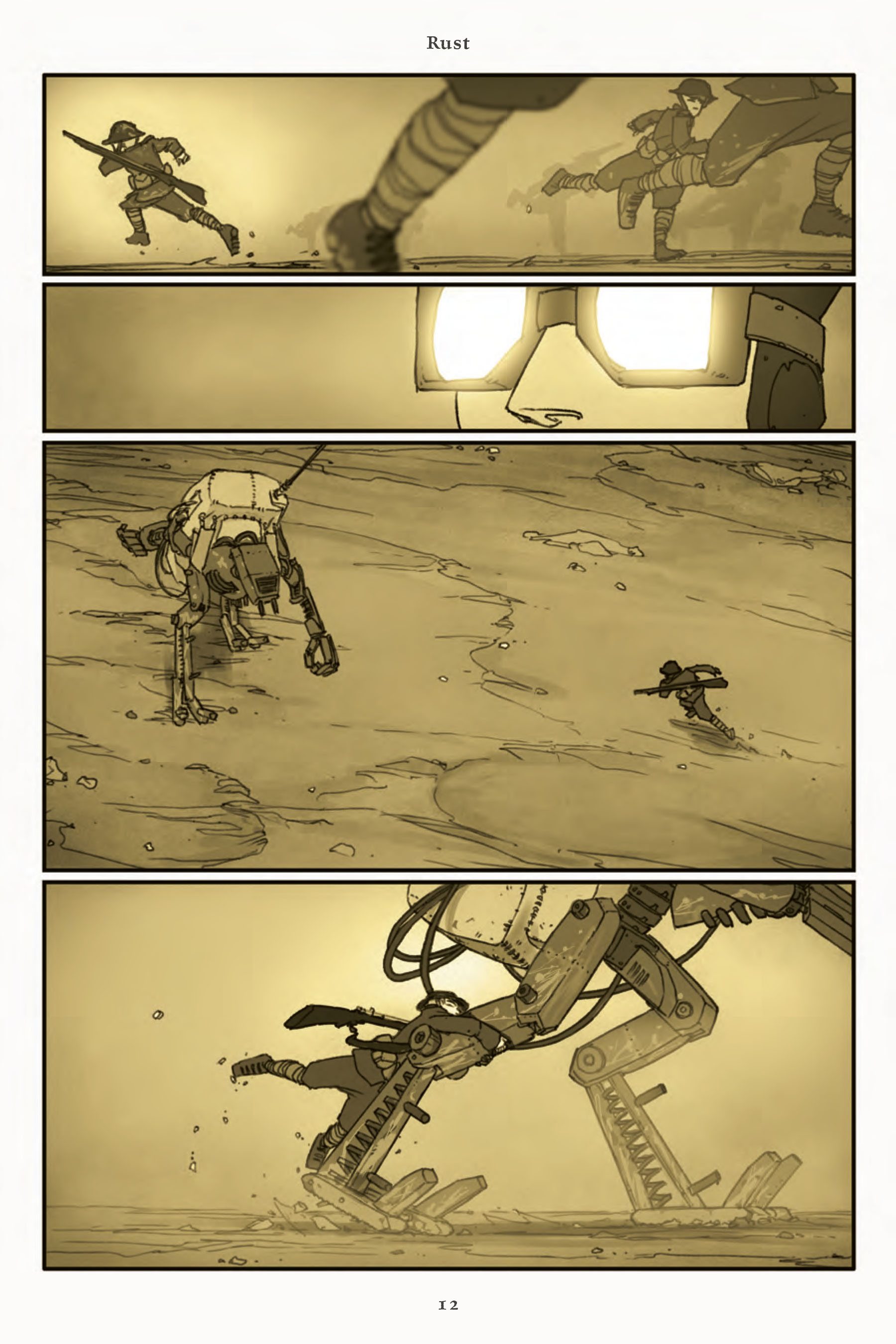


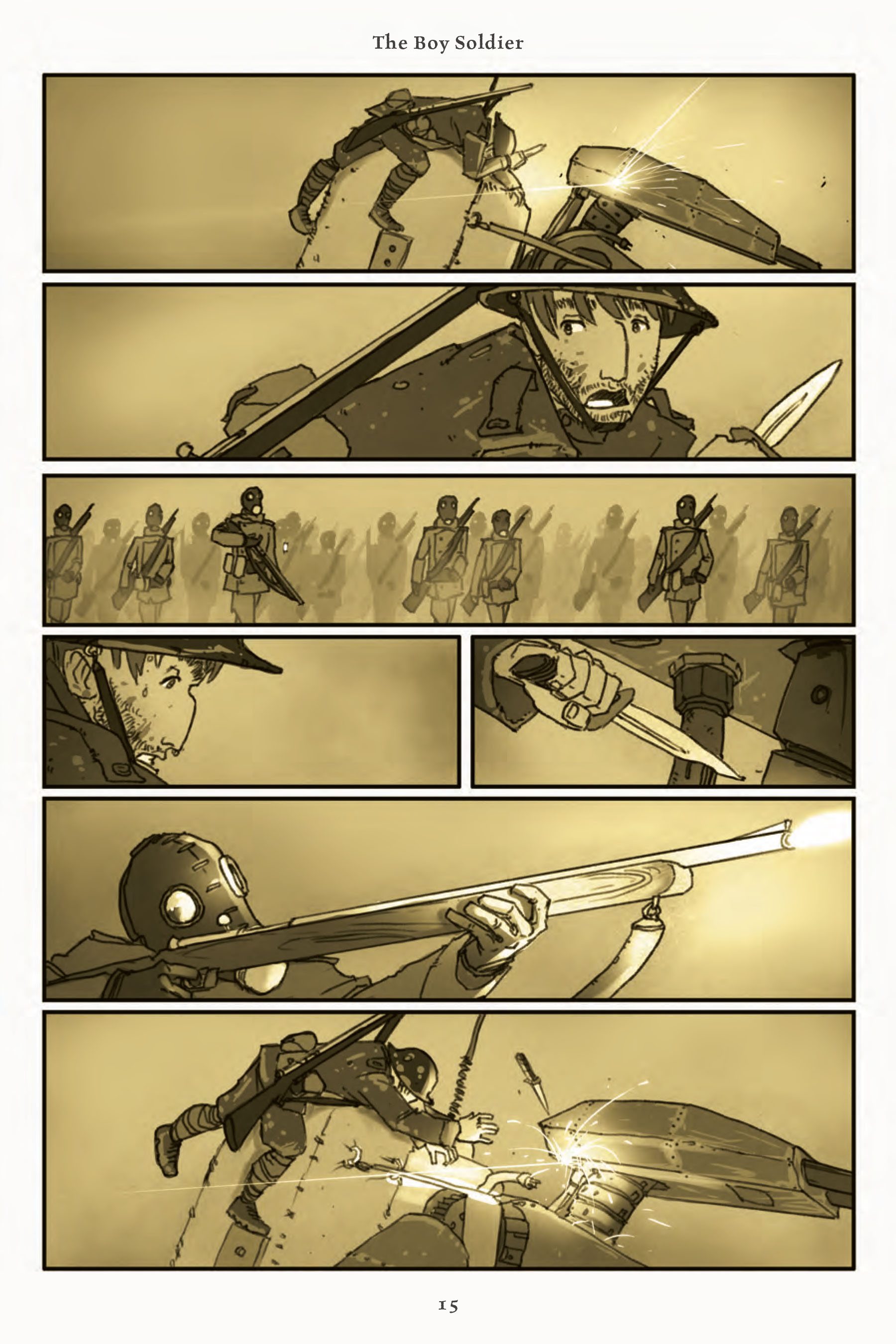
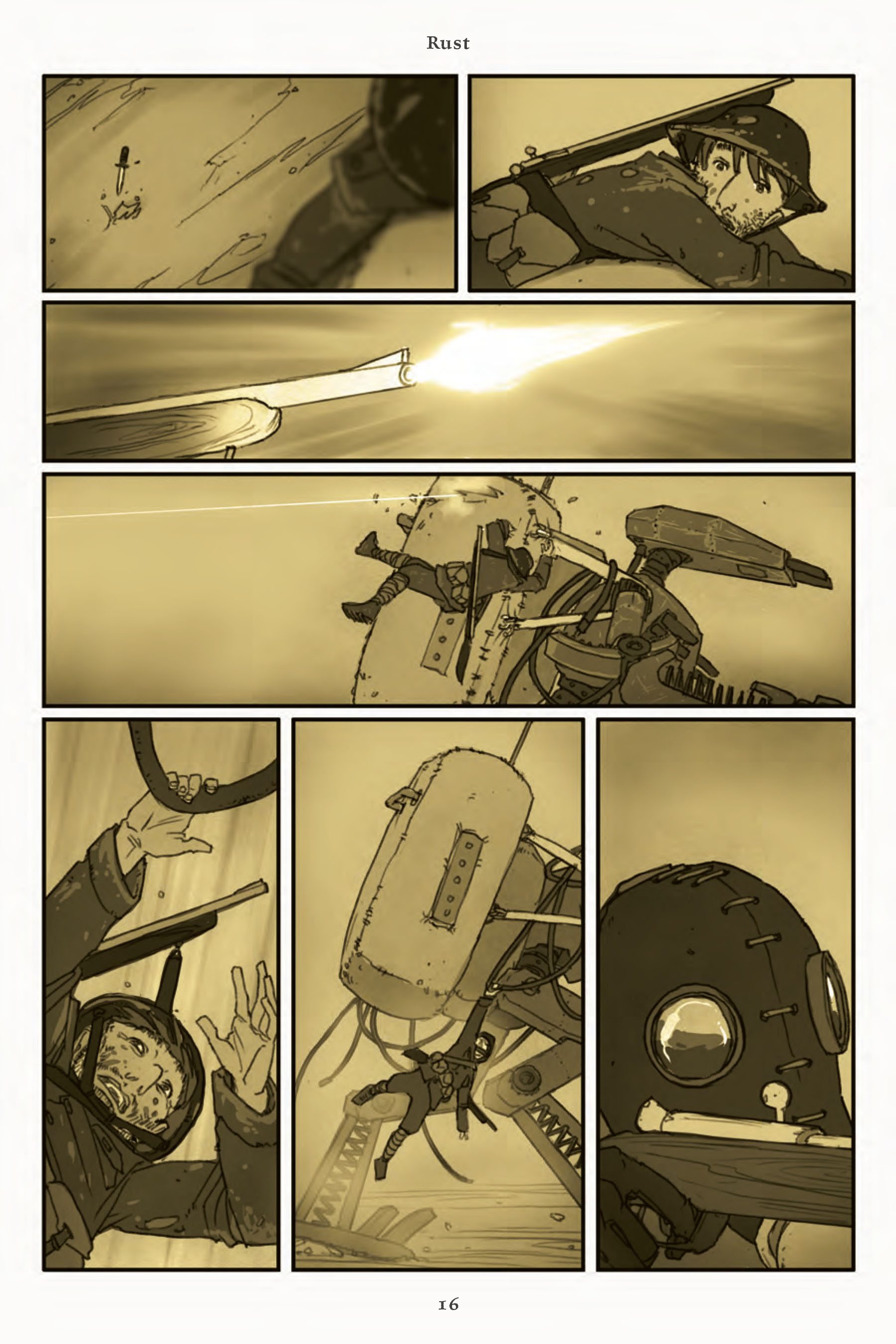


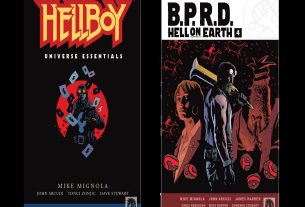
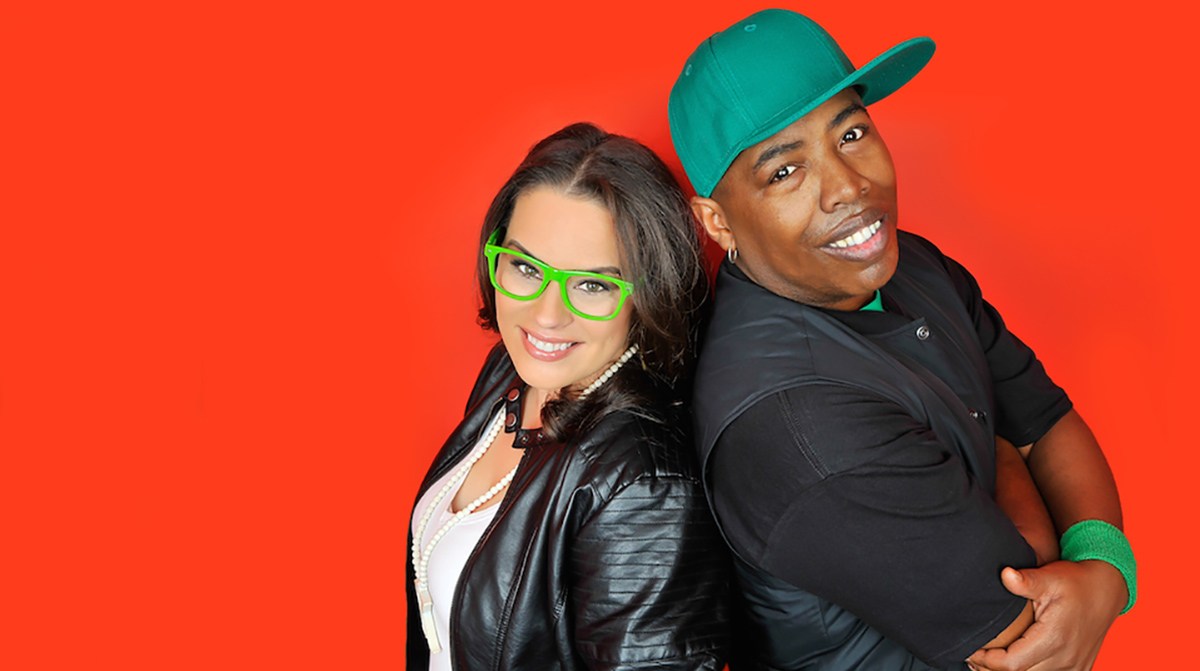
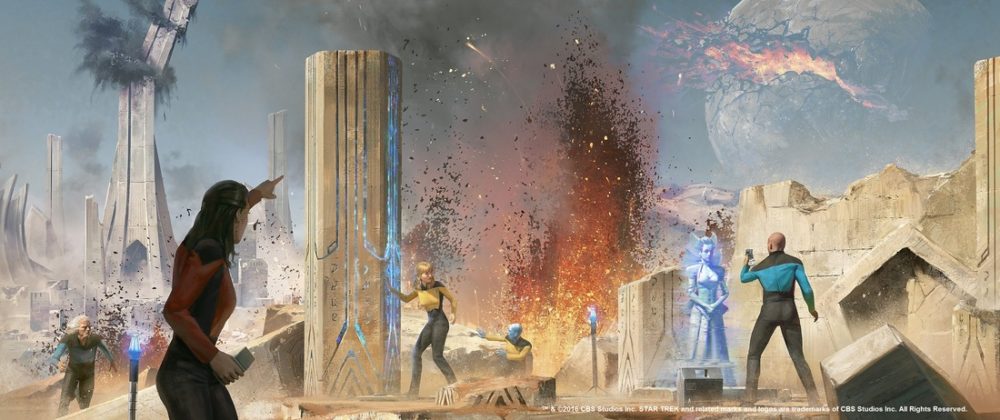
Any hints when volume 4 will published?